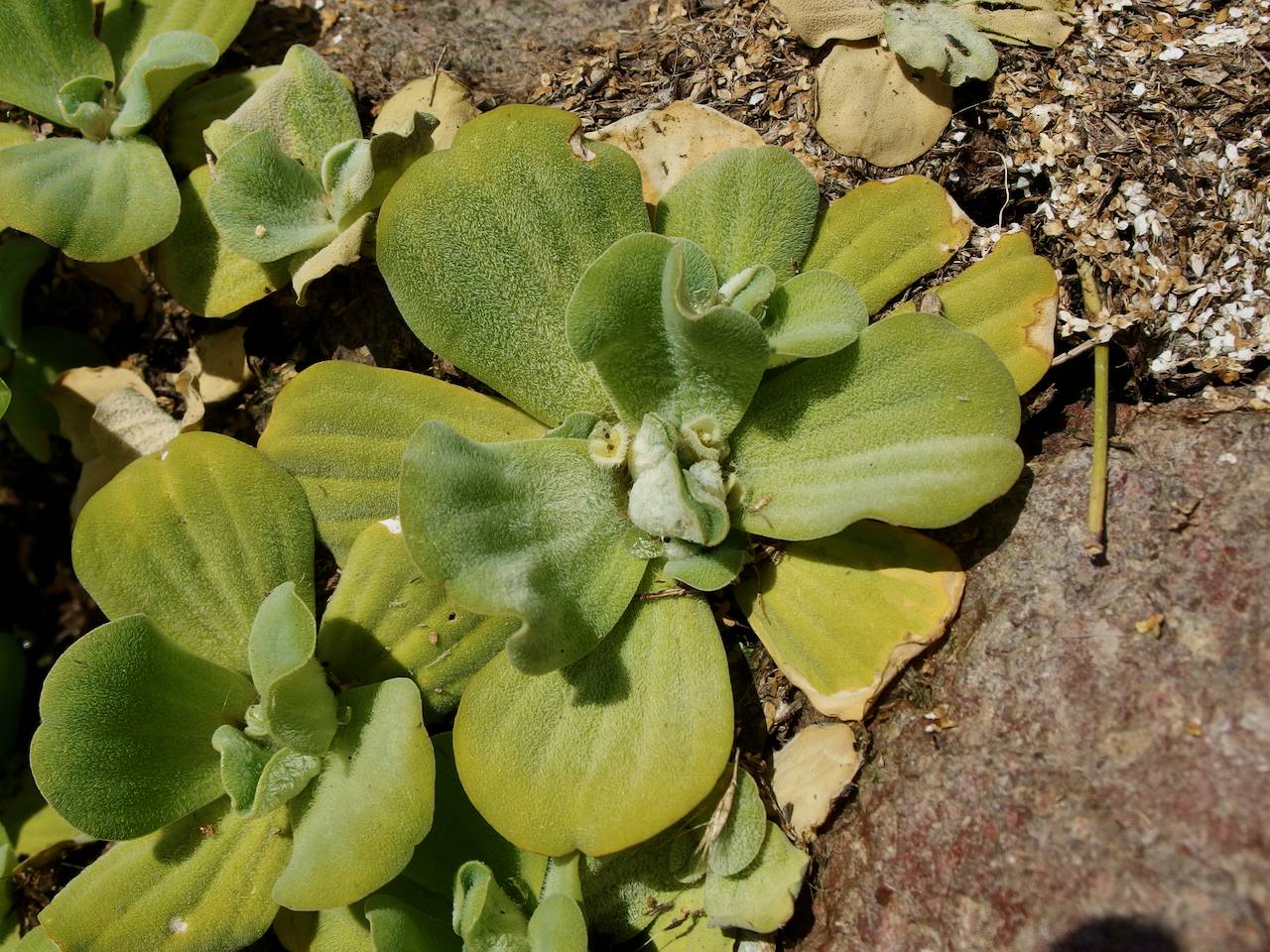Pistia
|
Family: Araceae |
Herbs, aquatic, floating on still or slow-moving water. Stolons frequently produced, terminating in young plants. Leaves appearing before flowers, several, floating to ascending or nearly erect, in dense rosette, sessile to subsessile; blade light green to grayish green, simple, not peltate, obovate to spatulate, base obtuse or rounded, apex subtruncate, rounded, or notched, pubescent; primary veins nearly parallel. Inflorescences: peduncle erect, very short, pubescent; spathe greenish, closed basally, open apically, exposing tip of female flower and male spadix; spadix basally adnate to spathe. Flowers unisexual; staminate and pistillate on same plant; staminate flowers distal to single pistillate flower; perianth absent. Fruits not embedded in spadix, green, turning brown at maturity. Seeds (1--)4--10(--20), mucilage probably present. x = 14. Although many names have been published in Pistia, it is currently considered to contain a single, highly variable species. Morphological variation is strongly influenced by environmental conditions and population density. Some botanists consider the genus to have been introduced into the United States and many regional floras state that fruits and seeds are not produced in the flora area. However, s Seeds with high rates of germination have been reported from many sites in Florida, however (F. A. Dray Jr. and T. D. Center 1989). The status of Pistia as native to the United States has not been resolved; available evidence suggests that it is indigenous. Pistia is economically and biologically important as a breeding site for insects, especially species of mosquitoes in the genus Mansonia, and it is often an aquatic weed. Although a serious pest in some areas of the world, Pistia has not caused major problems in the United States (M. C. Bruner 1982). At least 23 species of insects worldwide have been reported to feed on P. stratiotes; those shown to be effective in biological control include Neohydronomus affinis (Coleoptera: Curculionidae: Erirhininae) and Samea multiplicalis (Lepidoptera: Pyralidae: Pyraustinae) (M. C. Bruner 1982; K. L. Harley et al. 1990). Plants are cultivated as aquatic ornamentals in greenhouses and gardens.
|

